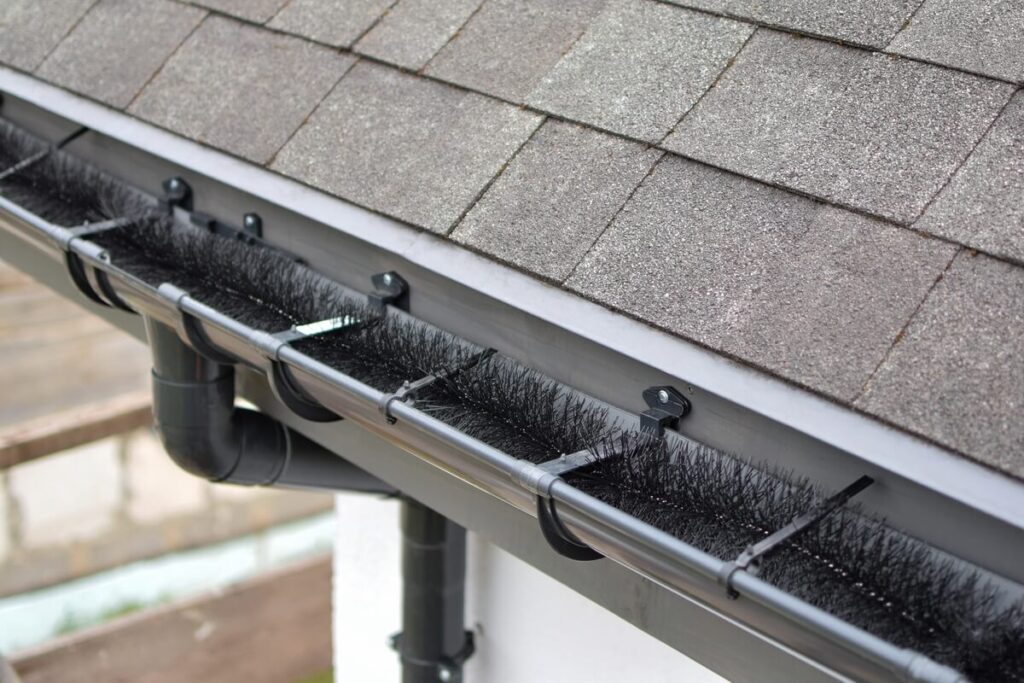Beyond the ideal kind of gutter guard for a home’s protection, there are a few other considerations to think about when choosing a gutter guard. These factors include installation, material, size, and visibility.
Gutter Guard Types
Screen, micro mesh, reverse curve (or surface-tension gutter guards), brush, and foam are the five most common varieties of gutter guards on the market. Each type has a unique set of benefits and factors to take into account.
Screen
Screen protectors have a plastic or wire grid that prevents leaves from falling into the gutter trough. The gutter screens are simple to install; simply raise the bottom row of shingles and slide the gutter screen edges along the gutter beneath the shingles; the weight of the shingles holds the screen in place.
The cheapest and easiest to install are screen gutter guards. Frequently, no tools are required.
Micro Mesh
Similar to screens, steel micro-mesh gutter guards let water through tiny holes while obstructing branches, pine needles, and other debris. They need to be installed using one of three straightforward techniques: sliding the edge below the first row of roof tiles, snapping the guard onto the top of the gutter, or fastening a flange to the fascia (the vertical strip just above the top of the gutter).
Even tiny pieces of waste, like flying sand, can be effectively blocked by micro-mesh gutter guards while still allowing rain to pass through. They come in a variety of materials, from sturdy stainless steel to affordable plastic.
Reverse Curve
Lightweight metal or molded plastic materials are used to create reverse-curve gutter guards. Before entering the gutter below, water passes over the top and then curves downward. Straight off the edge, leaves and other debris fall to the earth below. Even in yards with plenty of trees, these gutter guards do a good job of keeping leaves and other debris out of the gutter.
Gutter guards with a reverse curve are more costly than mesh and screen alternatives. They must be attached to the roof’s fascia at the proper angle and are more difficult to install yourself than other gutter guards.

Brush
Brush gutter guards are simply huge pipe cleaners that lie inside the gutter, preventing the entry of heavy debris and the resulting blockages. Cut the brush to the appropriate length, then just shimmy it into the gutter. Budget-conscious DIYers frequently choose brush-style gutter guards because of their simple installation and low cost.
The standard construction of this kind of gutter guard consists of a thick metal wire core with polypropylene bristles spreading from it. The flexible metal wire core of the guards allows them to be bent to fit around corners or strangely shaped stormwater drainage systems. The guards don’t need screws or other connections to the rain gutters.
Foam
Another simple solution is a triangular foam block that rests in the gutter. To keep debris out of the gutter, one flat side faces the rear of it, while the other flat side faces the top. Water and tiny debris may flow through the drainage system thanks to the third flat side, which is located diagonally in the gutter.
Because they are affordable and simple to install, foam gutter guards are a fantastic option for do-it-yourselfers.






